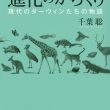ペストの流行 歴史は後から作られる例
公開日:
:
最終更新日:2018/01/17
観光資源
BBCを聴く。中世の黒死病、ペストの流行はネズミによるものだと、学校で教えられたはずだが、残存するデータを基にシミュレーションしてみると、人間の蚤、虱が媒介していたということが明らかになったようだ。これも歴史は後から作られる典型であろう。
ウィキペディアには「ペストは元々齧歯類(特にクマネズミ)に流行した病気で、人間に先立ってネズミなどの間に流行が見られることが多い。」と記述されている(2018年1月16日)。こうなるとウィキペディアも良し悪しになってしまう。
http://www.bbc.com/news/science-environment-42690577
Rats were not to blame for the spread of plague during the Black Death, according to a study.
The rodents and their fleas were thought to have spread a series of outbreaks in 14th-19th Century Europe.
But a team from the universities of Oslo and Ferrara now says the first, the Black Death, can be “largely ascribed to human fleas and body lice”.
The study, in the Proceedings of the National Academy of Science, uses records of its pattern and scale.
The Black Death claimed an estimated 25 million lives, more than a third of Europe’s population, between 1347 and 1351.
“We have good mortality data from outbreaks in nine cities in Europe,” Prof Nils Stenseth, from the University of Oslo, told BBC News.
“So we could construct models of the disease dynamics [there].”
He and his colleagues then simulated disease outbreaks in each of these cities, creating three models where the disease was spread by:
rats
airborne transmission
fleas and lice that live on humans and their clothes
In seven out of the nine cities studied, the “human parasite model” was a much better match for the pattern of the outbreak.
It mirrored how quickly it spread and how many people it affected.
“The conclusion was very clear,” said Prof Stenseth. “The lice model fits best.”
“It would be unlikely to spread as fast as it did if it was transmitted by rats.
“It would have to go through this extra loop of the rats, rather than being spread from person to person.”
‘Stay at home’
Prof Stenseth said the study was primarily of historical interest – using modern understanding of disease to unpick what had happened during one of the most devastating pandemics in human history.
But, he pointed out, “understanding as much as possible about what goes on during an epidemic is always good if you are to reduce mortality [in the future]”.
Plague is still endemic in some countries of Asia, Africa and the Americas, where it persists in “reservoirs” of infected rodents.
According to the World Health Organization, from 2010 to 2015 there were 3,248 cases reported worldwide, including 584 deaths.
And, in 2001, a study that decoded the plague genome used a bacterium that had come from a vet in the US who had died in 1992 after a plague-infested cat sneezed on him as he had been trying to rescue it from underneath a house.
“Our study suggests that to prevent future spread hygiene is most important,” said Prof Stenseth.
“It also suggests that if you’re ill, you shouldn’t come into contact with too many people. So if you’re sick, stay at home.”
関連記事
-

-
西部邁『獅子たりえぬ超大国』を読んで
2003年出版の本であるが、今読むとその意味がよくわかる。 ブッシュのイラク戦争は、ウェストファリ
-

-
観光資源と伝統 『大阪的』井上章一著
今年も期末試験問題の一つに伝統は新しいという事例を提示せよという問題を出す予定。井上章一氏の大阪
-

-
『公研』 2018年2月号 「日本人は憲法をどう見てきたか?」
歴史は後から作られるの例である。 境家史郎氏と前田健太郎氏の対談 日本国民が最初から憲法九条
-

-
進化論 宗教と進化論 『進化のからくり』千葉聡 ガラパゴス島が観光資源になる過程の材料として面白い
イスラム教と進化論、初期キリスト教と進化論 https://youtu.be/i_lrAKC3
-

-
○『公研』2015年9月号「世界のパワーバランスの変化と日本の安全保障」(細谷雄一)を読んで
市販はされていないが、毎月送られてくる雑誌に公益産業研究調査会が発行する『公研』という雑誌がある。読
-

-
筒井清忠『戦前のポピュリズム』中公新書
p.108 田中内閣の倒壊とは、天皇・宮中・貴族院と新聞世論が合体した力が政党内閣を倒した。しかし、
-

-
『動物たちの悲鳴』National Geographic 2019年6月号
観光と動物とSNS https://natgeo.nikkeibp.co.jp/atcl/m
-

-
動画で考える人流観光学 観光資源論 フィリピンセブ島刑務所の囚人ダンス
フィリピンセブ島観光・旅行【決定版】絶対にするべき39スポット&アクティビティ http://ce
-

-
八鍬友広著『闘いを記憶する百姓たち』
自力救済の時代は悲惨であった。権力が確立すると訴訟によることとなり、平和が確立される。 江戸時代は
-

-
歴史は後から作られるの例 「テロと陰謀の昭和史」を読んで
井上日召の「文芸春秋臨時増刊 昭和29.7 p.160「血盟団」の名称は、木内検事がそう呼んだので
- PREV
- 観光資源としての明治維新
- NEXT
- 『外国人労働者をどう受け入れるか』NHK取材班を読んで
